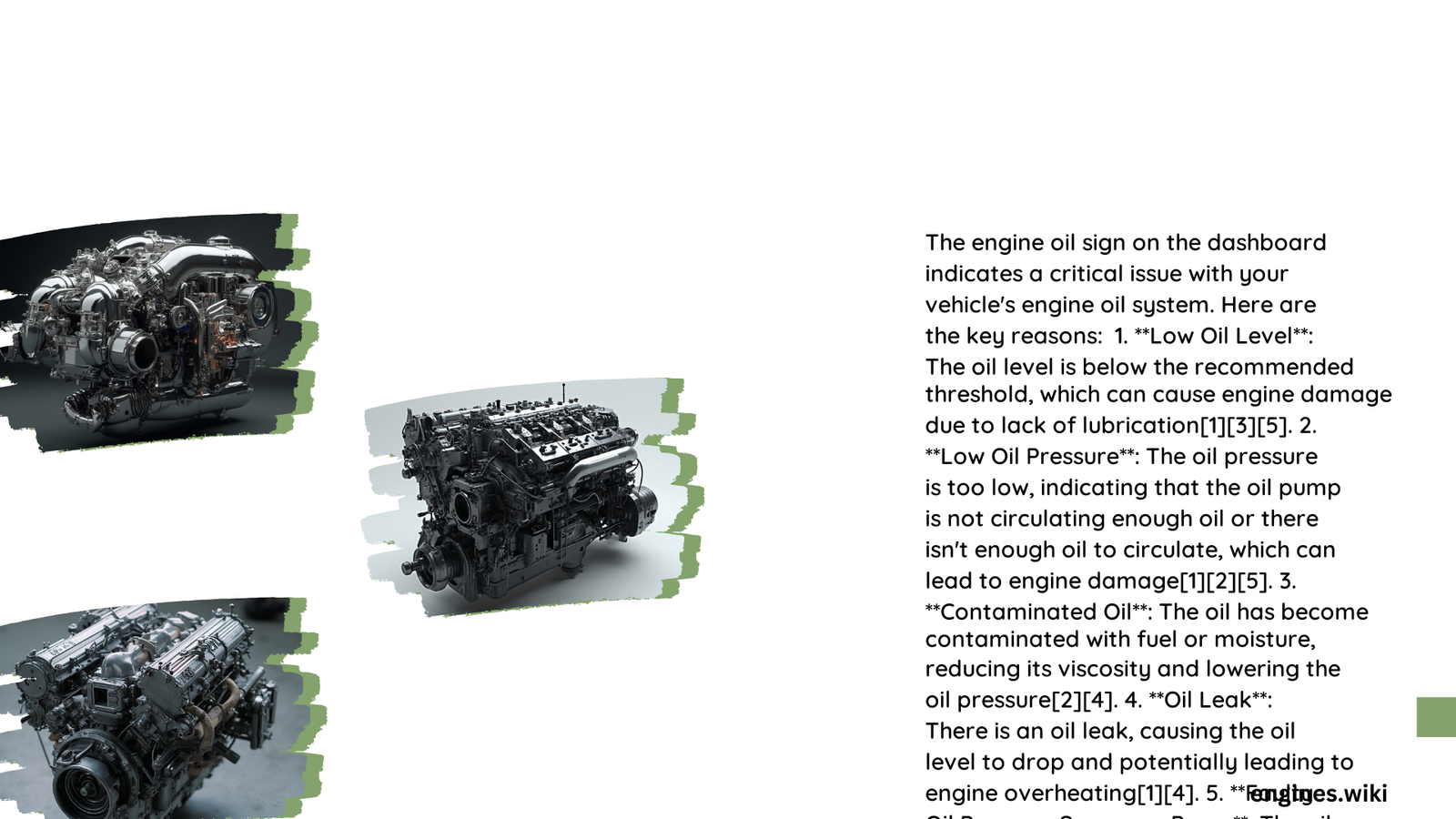The engine oil sign on your dashboard is a crucial indicator of your vehicle’s health. This warning light, often shaped like an oil can or genie lamp, illuminates when there’s a problem with your engine’s oil system. Understanding why this sign appears and what it means can help you prevent serious engine damage and costly repairs.
What Does the Engine Oil Sign Mean?
The engine oil sign on your dashboard typically indicates one of several issues:
- Low oil pressure
- Low oil levels
- Faulty oil pump
- Dirty or degraded oil
- Clogged oil filter
- Engine overheating
- Oil system blockage
- Faulty oil pressure sensor
Let’s dive deeper into each of these potential causes and their implications.
Why Does the Engine Oil Sign Light Up?

Is Your Oil Level Too Low?
One of the most common reasons for the engine oil sign to illuminate is low oil levels. This can occur due to:
- Oil leaks
- Oil burning (common in older or high-mileage engines)
- Neglecting regular oil checks and top-ups
To check your oil level:
- Park your car on level ground and wait for the engine to cool.
- Locate the dipstick (usually marked with a yellow handle).
- Pull out the dipstick and wipe it clean.
- Reinsert the dipstick fully, then remove it again.
- Check where the oil mark falls between the minimum and maximum lines.
If the oil level is below the minimum line, you need to add oil immediately.
Could Your Oil Pressure Be Low?
Low oil pressure is another common trigger for the engine oil sign. This can be caused by:
- Low oil levels
- Worn engine bearings
- A failing oil pump
- Oil that’s too thin for your engine
Low oil pressure can lead to insufficient lubrication, causing increased friction and potential engine damage.
Is Your Oil Pump Faulty?
A faulty oil pump can’t circulate oil properly through your engine, leading to low oil pressure. Signs of a failing oil pump include:
- Increased engine noise
- Higher engine operating temperature
- Decreased fuel efficiency
How Old is Your Oil?
Dirty or degraded oil can also trigger the engine oil sign. Over time, oil breaks down and becomes contaminated, losing its lubricating properties. This can lead to:
- Increased engine wear
- Poor fuel economy
- Engine overheating
Regular oil changes are crucial to prevent these issues.
What Should You Do When the Engine Oil Sign Appears?
When you see the engine oil sign on your dashboard:
- Pull over safely as soon as possible.
- Turn off the engine to prevent damage.
- Check the oil level using the dipstick.
- If the oil level is low, add oil if you have some available.
- If adding oil doesn’t solve the problem, or if you’re unsure what to do, call for roadside assistance or a tow truck.
| Action | Reason |
|---|---|
| Pull over | Prevent potential engine damage |
| Turn off engine | Stop further wear or damage |
| Check oil level | Identify if low oil is the issue |
| Add oil if needed | Potentially resolve the problem |
| Call for assistance | Get professional help if unsure |
How Can You Prevent the Engine Oil Sign from Appearing?
To minimize the chances of seeing the engine oil sign:
- Follow your vehicle’s recommended oil change schedule
- Regularly check your oil level (at least once a month)
- Use the correct type and grade of oil for your vehicle
- Address any oil leaks promptly
- Pay attention to any changes in engine noise or performance
What Are the Consequences of Ignoring the Engine Oil Sign?
Ignoring the engine oil sign can lead to severe consequences:
- Increased engine wear
- Reduced fuel efficiency
- Engine overheating
- Seized engine components
- Complete engine failure
The cost of repairing or replacing an engine far outweighs the cost of regular maintenance and prompt attention to warning signs.
When Should You Seek Professional Help?
If you’re unsure about handling oil-related issues, it’s best to seek professional help. Consider consulting a mechanic if:
- The oil sign remains on after adding oil
- You notice unusual engine noises
- There’s visible smoke from the exhaust
- You detect a burning oil smell
- The engine is running hotter than usual
Remember, regular maintenance and prompt attention to warning signs like the engine oil light can save you from costly repairs and extend the life of your vehicle.
